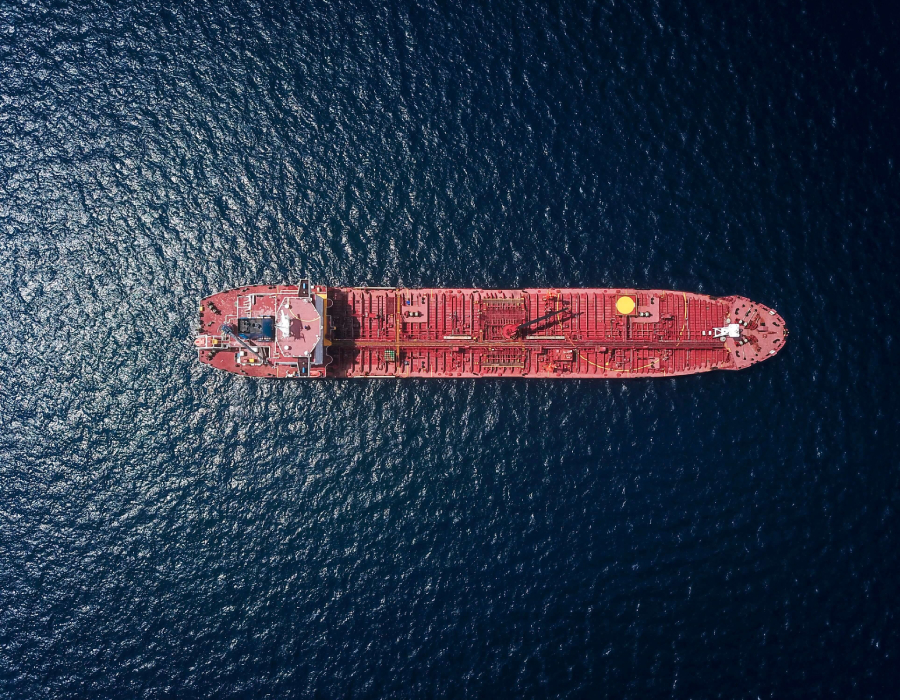

Our mission is to provide reliable, sustainable, efficient, and high-quality logistics services to our valued Customers. We will achieve this through our highly skilled and engaged Employees, supported by technology.

Our vision is to be the Port of choice for Belizean shippers, facilitating economic growth, offering innovative Customer-centric services, and providing Employees with rewarding careers.
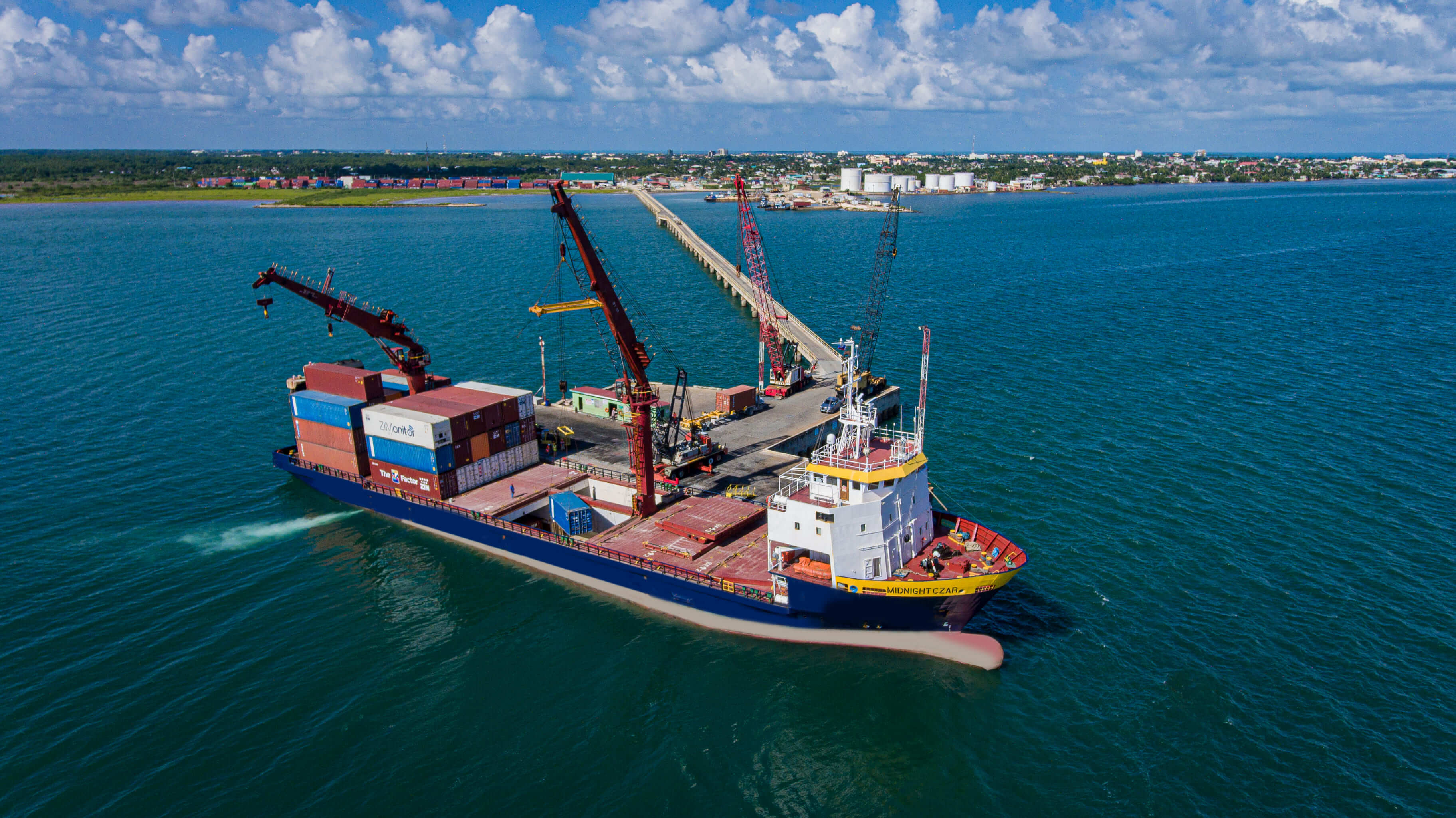
Cargo into and out of Belize before 1976 was lightered at anchorage from bulk ships to barges. 1976 saw the introduction of container ships calling in the region, and these were also handled at mid-stream initially. The port’s administration had the vision of handling cargo without lightering, and the port pretty much as we see it today, was developed and opened on July 1st 1980, through the administration of Hon. Fred Hunter, Minister of Works for the government of Belize. The new port featured an 800 meter-long trestle connecting the land at Port Loyola to a 67 meter long pier head (“King’s Pier”) where containerised and other ships could berth.
Mr. William Longsworth was appointed to lead the administration of the port, and he served as the Harbor Master. With his leadership of the time, the port remained steadfast to its objectives of raising the standards of the Belizean logistics, to expand the port and foster a partnership among the world’s maritime organisations.

The first three years of operations had many challenges and with challenges came solutions and experiences on how to improve. With any journey of change, there will be challenges and the Port had its own set of challenges through-out the years. The port labour force had to adopt to new cargo handling methods. The cargo shed became too small to handle the volume of cargo coming in and a another one had to be built. At the time power supply was not stable and very inadequate and due to this being an issue, a 50Kwh electric generator was installed to keep operations going even through regular power outages. Another significant challenge was the restriction of the crane. The crane was only allowed to operate in one area of the compound due to lack of land space. Lastly since most of the equipment was from Europe, it made it difficult to source and replace parts for the cargo handling equipment’s.
However, with challenges come opportunities to improve. The new operation offered many improvements and benefits for the company, Customers and their Agents. The business community as a whole benefitted from lesser pilferage, reduced cargo damage, fewer insurance claims and reductions in labour costs, resulting in improved Customer satisfaction.
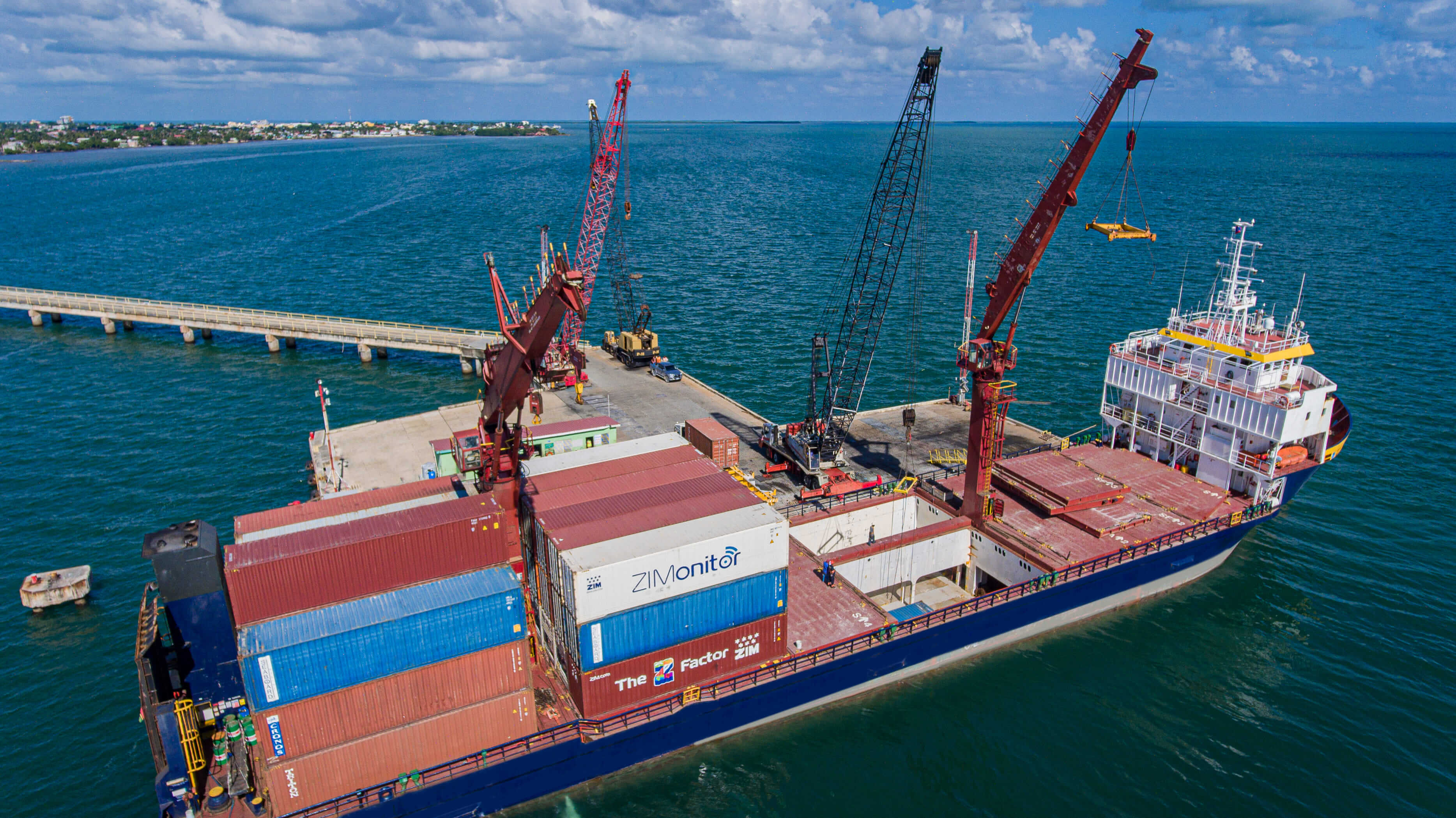
By 1992 the Port had replaced its six Reliance Mercury Dock-Tractors with American made Ottawa Dock Trucks. The old 35-ton Jones crane was replaced with a 140-Ton Manitowoc mobile crane (“Big B”). As the port increased in cargo volume, the Port saw the need for more modern equipment. In 1993 the Port acquired a P&H Reach Stacker and in 2000 a Hyster 1050 E container lift truck. This modern equipment significantly improved the container handling capabilities and efficiency at the port which allowed the port to further improve upon Customer satisfaction.
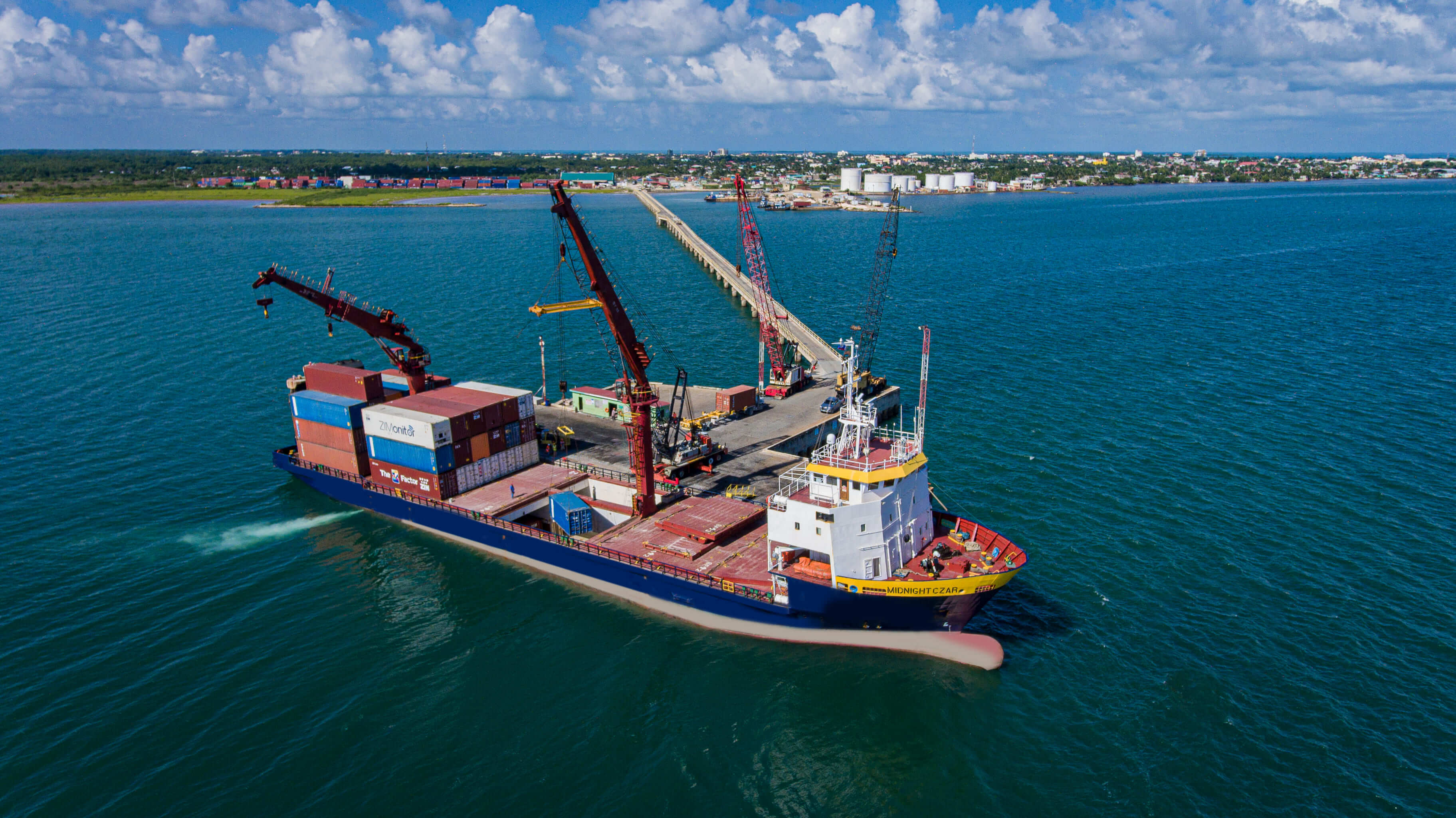
The Port made another leap forward in 2001 when the access channel and turning basin was created, dredged to 10 meters in depth and 120 meter in width. This allowed the docking of larger vessels with more larger payloads, which saved time and reduced shipping cost, and this resulted in a more competitive edge for the Port.
On November 15th, 2001, the Government of Belize divested its interest in the Port Cargo handling operations. The Port of Belize Ltd. was incorporated as a public limited liability company to take over the cargo handling operations, and pilotage services for Belize district, which were previously the responsibility of the Belize Port Authority (BPA). In 2002, Belize Ports Ltd. a private company owned by local investors purchased the majority shareholding in the Port. With this privatisation, the Port had a platform on which to create new business opportunities. Many new ventures have opened since and added value to the services offered.
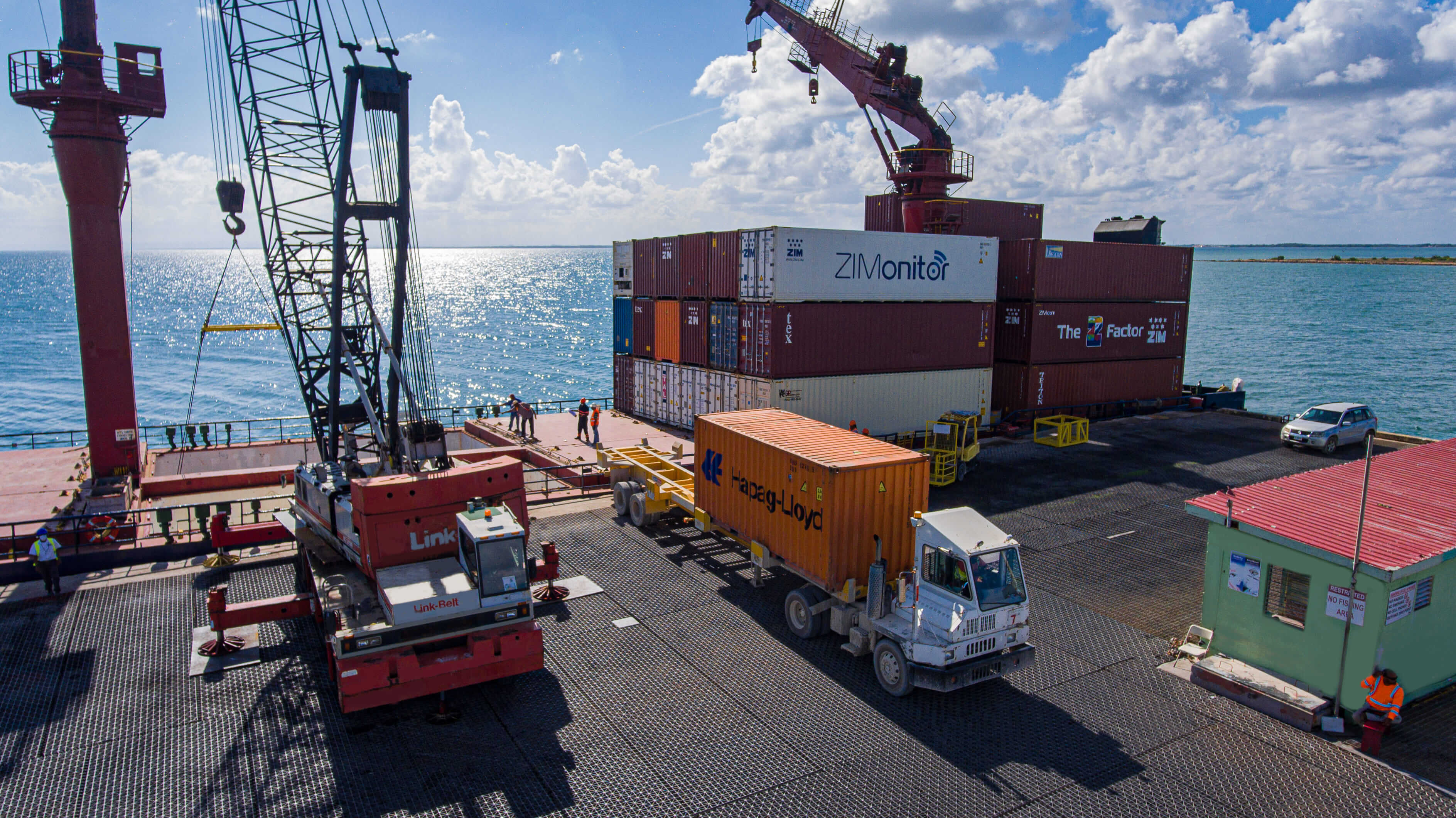
At the end of 2004, the Stevedores transferred from the Belize Waterfront Employees Association (BWEA) to Port of Belize Ltd. The Stevedores previously had handled the bulk and container ships at mid-stream before 1980 and then subsequently at King’s Pier, contracted by BWEA to the ship’s Agents.
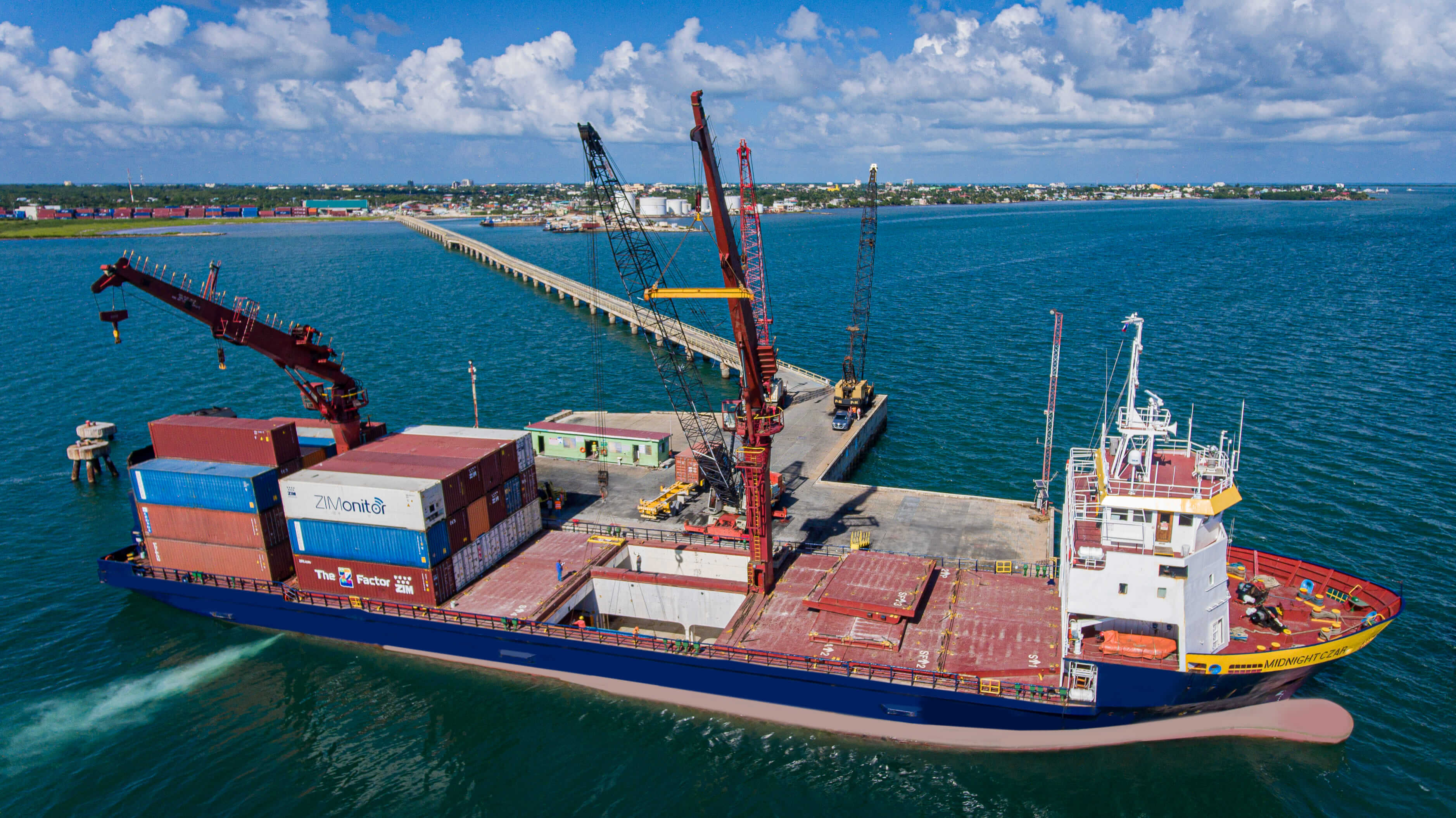
At the start of 2012 the port was placed into Receivership by its main creditors, the lowest point of its then 32-year history. Despite this set back, the port continued to invest and upgrade to handle higher volumes and to continue to improvement levels of service for its Customers.
In 2012, the mechanic workshop was renovated and 5 towheads were acquired. 2013 saw the purchase of the Hyster Yardmaster reach-stacker. In 2014 a Linkbelt2000 crane was bought for ship handling at the King’s Pier. In 2015 a further 2 towheads were added along with the Taylor stacker. A major investment was made in 2016 for the embarkation/disembarkation of pilots to or from the ships at English Caye with the acquisition of the launch - Oliver 108. A second Linkbelt1996 was added to the King’s Pier in 2016, as well as the installation of two Toledo scales so that the port could provide Verified Gross Mass certification for Belizean exports. In 2020, 4 new bomb-cart chassis and 2 more Hyster Fork-Lift trucks were added to the fleet.
The port has also tried to remain ahead of the curve in terms of digitalisation. Initially this was achieved through in-house development, but subsequently new applications have been rolled-out to cover the areas of Accounting and Payroll, then Operations with a new Terminal Operating System in 2020, Human Resources and lastly Maintenance, both in 2021.
The port has also more recently formalised agreements with its employees representative Union with new CBA’s for Stevedores in 2020 and Staff in 2021.
2021 witnessed greatly improved vessel and external truck turn around times, and both will continue to be in focus in 2022 and beyond.

Since 2021 the port has welcomed 6 container bomb-cart trailers, 3 additional towheads, 1 Reach Stacker, 2 Forklifts and an additional 210-ton Truck Crane. In 2022, the port undertook several major works on the trestle to further preserve it against old age and ensure its feasibility for operations.
The current drive to digitize the port process will continue to be in the spotlight, with the main strategic goal to improve Customer touchpoints, and greater process efficiency. At the helm of these efforts is the new leadership team and their continuous strive towards enhancing the employee and customer experience.
Within the coming years we envision the commencement of the construction of our future port with its operational application and throughput bolstering the growth of the maritime and fiscal sectors of Belize. The expansion project will encompass a state of art port with a fit for purpose 580-meter-long cargo wharf, equipped with modern equipment, to keep the cargo handling service of the port relevant for the next few decades. The new port will feature Belize’s first on-shore state-of-the-art cruise facility, which is desperately needed to reverse the declining quantity of cruise tourists and the corresponding drain on the national economy. This Port of Belize’s future will include a privately funded total investment of BZ$400 million.